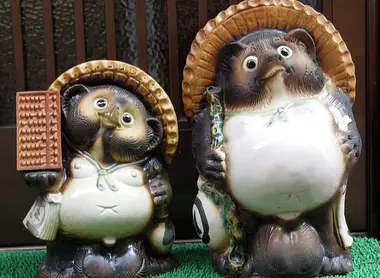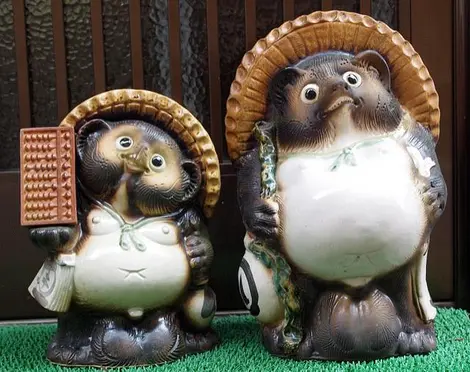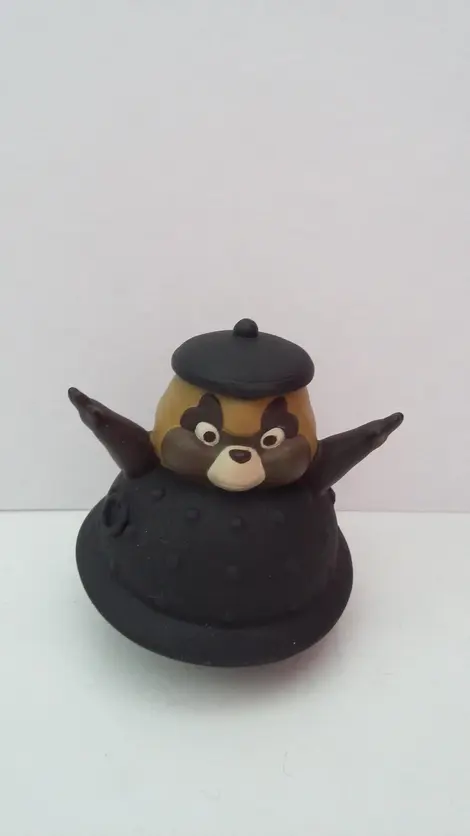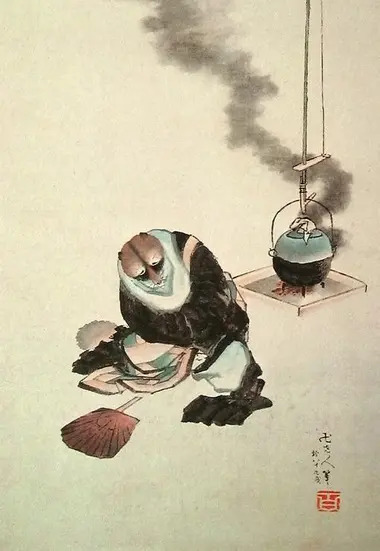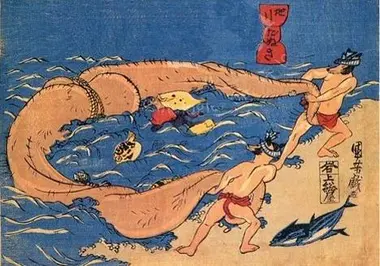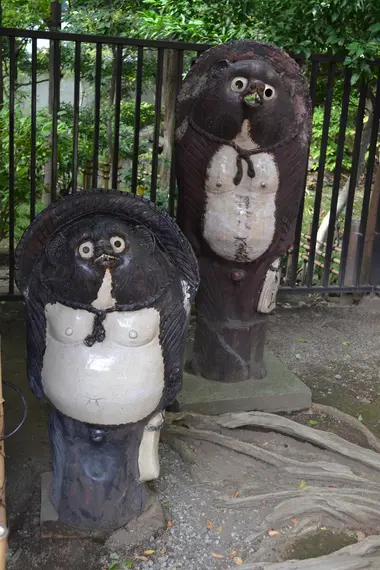The Tanuki: between legend and reality 狸
- Published on : 18/01/2018
- by : S.V.
- Youtube
The surprising Japanese youkai
Facetious and benevolent, tanuki is a youkai "strange apparition" particularly appreciated and adored in Japanese folklore. Under its appearance of a playful raccoon with a very fleshy belly and a friendly guise, the tanuki is a popular icon with mysterious power.
The tale of the magic teapot
Originally from China, the legend of tanuki appears in Japan between the 4 and 7th centuries. He is then perceived as a malevolent creature; an image inherited from Chinese legends in which the tanuki, having taken on human appearance, haunts men.
But over the centuries, his image evolved making him a harmless and humorous character, synonymous with prosperity. Japanese texts of the 8th century were mentioned but remained relatively unknown until the early 17 century. It was at this time that the change took place.
Legends of the Edo period (1603-1868), like the tale Bunbuku Chagama, shape him as a fantastical creature capable of taking on any appearance. In some stories, he has to place a leaf over his head first. Bunbuku Chagama, literally "Bunbuku tea-kettle" appeared in the seventeenth century. In legend, Bunbuku Chagama is the name of a tea kettle owned by priest Shukaku who turned out to be a tanuki, the supposed kettle still on view at Morin-jinja] temple which Shukaku served.
In appreciation, the tanuki turns into a chagama (metal kettle used during the tea ceremony ) and tells the man to sell it. The monk at Morin-ji temple in Tatebayashi buys the tanuki kettle and places it on the fire. Not supporting the heat, the tanuki cannot prevent its limbs from reappearing and flees from the temple. Back in its form, the tanuki suggests that he offer a paying attraction to the population: that of a teapot walking and dancing on a tightrope. The man found fortune there and the tanuki a home. After this success, the teapot would be returned to Morin-ji where it is still visible.
- Read also: Youkai, ghosts, and Japanese monsters
The magical attributes of tanuki
In the Edo period, tanuki, at the heart of many legends, suddenly became very popular; so much so that it becomes a recurring theme of ukiyo-e prints. A changeling creature, he also has a curious and humorous characteristic: an oversized scrotum... According to legend, his gigantic scrotum, called kinbukuro (bags of gold) or kintama (golden balls), can stretch to reach the size of 8 tatami mats... In all seriousness, restraint is recommended from speaking the word kintama as it may offend some people...
This strange and bewildering ability is said to have its origins in the work of goldsmiths in Kanagawa Prefecture, used to wrap the gold in a tanuki skin when it was transformed into thin leaves. The flexible and strong skin allowed the gold to be hammered as finely as possible. Thus was born the myth of the giant and stretchable scrotum.
Prints contributed to its propagation; making kinbukuro an indispensable characteristic of tanuki. In 1842, Kuniyoshi produced an 'ukiyo-e" series featuring the incredible and surprising abilities of tanuki scrotums... serves as a fishing net, boat, umbrella, blankets ...
- Read also: Youkai of the Seto Inland Sea
In popular culture
Today, tanuki is still represented with a large scrotum but also with a straw hat, holding a bottle of sake and a tsucho (accounting book); a classic image dating from the Taisho era (1912-1916). also known for using his big belly like a drum to produce the beat: "pompoko pon pon"...
Pompoko is also the title of Isao Takahata's anime, produced by Studio Ghibli in 1994. In this one, the tanuki fight to stop construction work and conserve their natural habitat in the countryside. The tradition of the giant scrotum is also maintained there since the tanuki of Isao Takahata uses their scrotums as parachutes! Popular culture has completely appropriated this youkai.
Today, Tanuki is widely used as a mascot, anime character, and even in video games! The legendary mustached plumber acquired the ability to transform himself into Mario- tanuki in Super Mario Bros 3 in 1988. In front of restaurants and bars, you will often find effigies of tanuki, this mischievous creature who loves to feast and drink. These statues are mostly produced in the ceramic workshops of Shigaraki (Shiga prefecture). Some temples are dedicated to the tanuki kami. The Yashima-ji in Takamatsu and the Chingodo in Asakusa are perfect examples.
